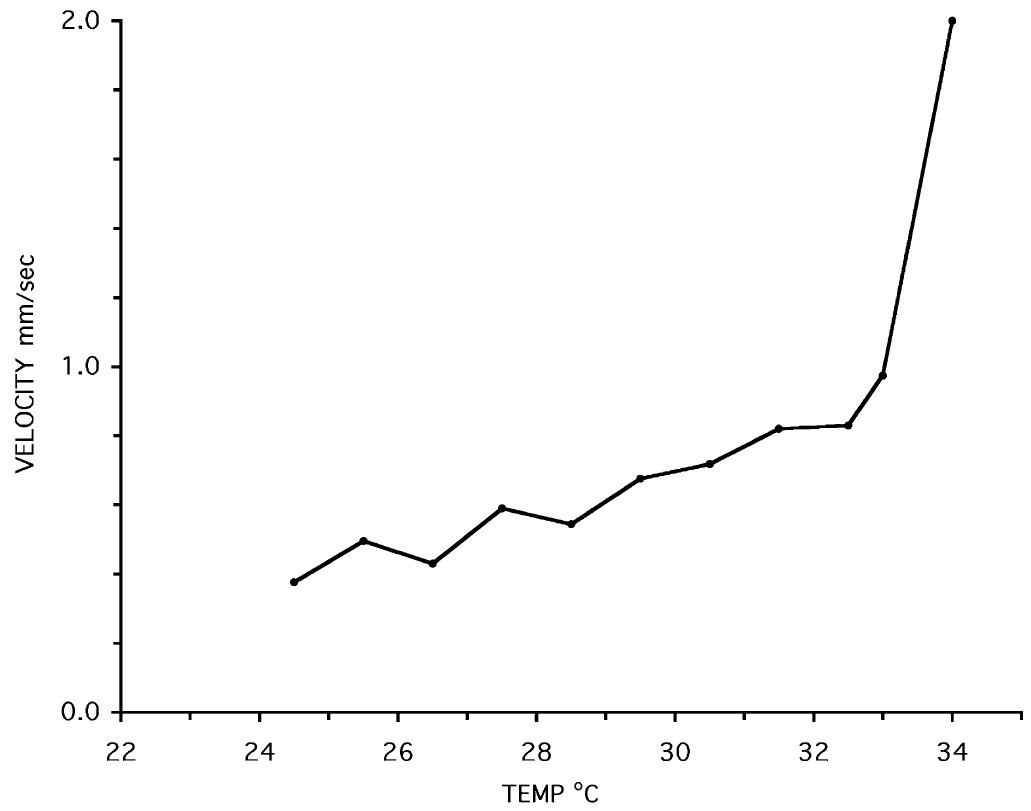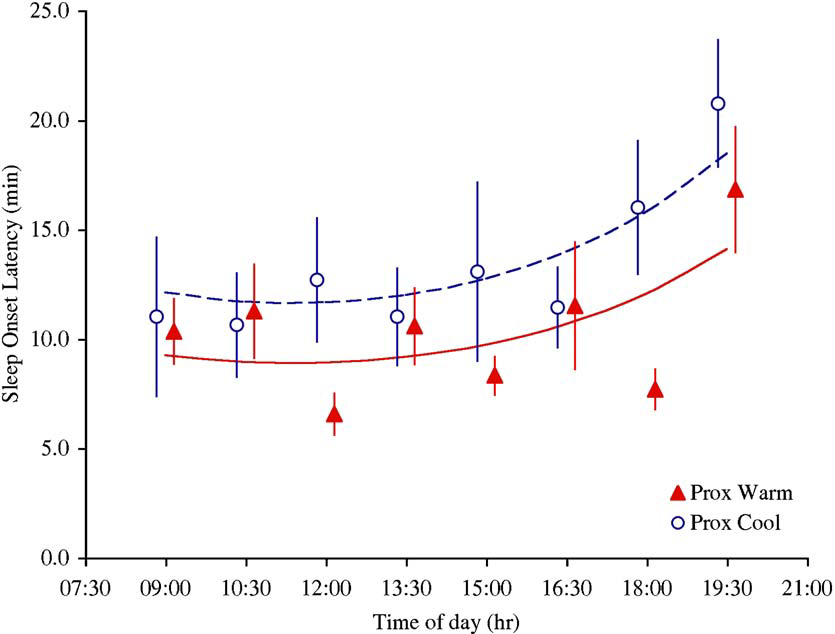
Fig. 5. Correlation between skin temperature and resting blood flow velocity (CBV) in one nailfold capillary of a healthy 37-year-old man. Notice the marked increase in CBV occurring at 34 C… The figure illustrates that the microclimate of at least 34 C that is created during sleep is essential in order to attain and sustain maximal skin blood flow.
Fall asleep faster by warming your skin
Sleep preferably occurs during the circadian phase of… increased heat loss… due to a profound increase in skin blood flow and, consequently, skin warming.[1]
…to fall asleep a certain comfortable microclimate is necessary.[2]
Sleep-related behavior including the creation of an isolated microclimate of high temperature by means of warm clothing and bedding in humans and the curling up, huddling and cuddling in animals all help limit heat loss.
The use of bed covers… allows for the development of an isolated microclimate of a temperature of even 34–36 C…, effectively limiting heat flow to the environment. Such a high environmental temperature yields an important additional advantage for attaining and stabilizing the high level of skin blood flow. …it is exactly at a temperature increase from 33 C to 34 C that vasodilation and skin blood flow increase steeply to their maximum, as shown in Fig. 5 [above]… The bed microclimate of 34–36 C is thus critical for the maintenance of a high level of skin blood flow, which would be annihilated even with a minute decrease toward 33 C.
… the prolonged period of increased skin blood flow… may support maintenance of the skin as a primary barrier in host defense.[1]
Especially, warm your fingers and toes
The distal skin regions, in particular fingers and toes, are the main thermoeffectors to lose core body heat…
… warm distal skin temperatures induced… by… selective skin warming predispose to a rapid onset of sleep.[3]

Fig. 4… …every subject was exposed to both slight warming and cooling at all times of day. The thermosuit manipulation resulted in a proximal skin temperature difference between the two conditions of only 0.8… C around a mean of 35.1.. C. In spite of the fact that subjects experienced the warm condition as slightly less comfortable, it accelerated sleep onset latency by 26%… [1]
- Van Someren, Eus JW. “Mechanisms and functions of coupling between sleep and temperature rhythms.” Progress in brain research 153 (2006): 309-324.
- Kräuchi, Kurt. “The human sleep–wake cycle reconsidered from a thermoregulatory point of view.” Physiology & behavior 90.2 (2007): 236-245.
- Kräuchi, Kurt, and Tom Deboer. “Thermoregulation in Sleep and Hibernation.” Principles and Practice of Sleep Medicine, edited by Meir H. Kryger et al, Elsevier, 2017, pp. 220-228.e5.